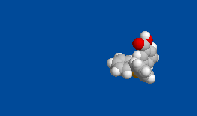Photoredox Catalysis
Photoredox Catalysis
While photochemically initiated radical reactions based on UV light have been known for a long time, such reactions using visible light have received sigificant attention only in the last 15 years. The use of visible light for radical formation allows milder reaction conditions as compared to classical radical chemistry, which is often accompanied by a higher selectivity and functional group tolerance. This has been made possible by the development of photoredox catalysts (PC), which, like chlorophyll molecules in plants, absorb visible light and make it chemically available. In their excited state, photocatalysts are excellent oxidizing and and reducing agents for organic molecules, making them perfect reagents for radical formation.[1-3] In our group, we use photoredox catalysis to generate carbon radicals as nucleophiles for classical transition metal catalysis. As we and others have shown, this dual catalytic approach has greatly expanded the range of accessible C–C single bonds. One achievement in this context, was the use of nitrogen- and oxygen-stabilized C-centered radicals as formal “hard” nucleophiles in allylation reactions. Previously published methods were limited to “soft” nucleophiles. The scheme below shows some our previous work in this area and two other examples.
References:
- M. H. Shaw, J. Twilton, D. W. C. MacMillan, J. Org. Chem. 2016, 81, 16, 6898.
- L. Marzo, S. K. Pagire, O. Reiser, B. König, Angew. Chem. Int. Ed. 2018, 57, 32, 10034.
- A. Y. Chan, I. B. Perry, D. W. C. MacMillan et al., Chem. Rev. 2022, 122, 2, 1485.
- J. Zheng, B. Breit, Angew. Chem. Int. Ed. 2019, 58, 11, 3392.
- J. Zheng, A. Nikbakht, B. Breit, ACS Catal. 2021, 11, 6, 3343.
- J. Zheng, N. Tang, H. Xie, B. Breit, Angew. Chem. Int. Ed. 2022, 61, e202200105.
- J. Zheng, C. Nopper, R. Bibi, A. Nikbakht, F. Bauer, B. Breit, ACS Catal. 2022, 12, 10, 5949.
- H. Xie, H. Chen, U. Dutta, Y. Lan, B. Breit, ACS Catal. 2024, 14, 17, 13352.
- C. Nopper, A. Veith, F. Himmelsbach, L. Söhner, B. Breit, Chem. Eur. J. 2024, accepted articles.
- H. Xie, B. Breit, ACS Catal. 2022, 12, 5, 3249.
- M. J. González, B. Breit, Chem. Eur. J. 2019, 25, 69, 15746.

